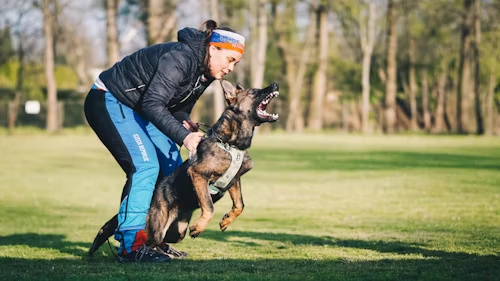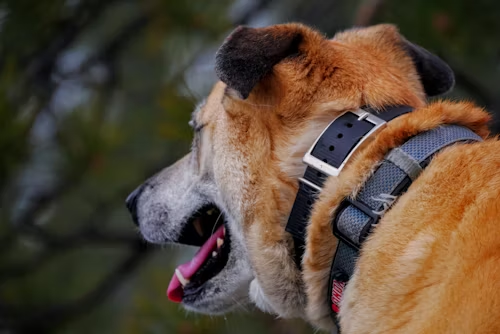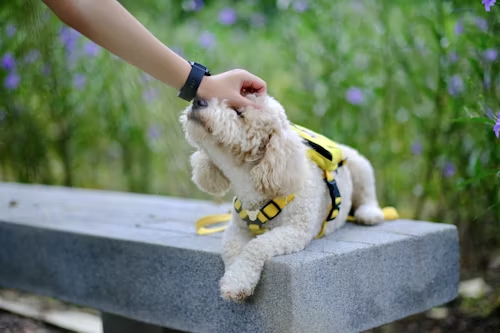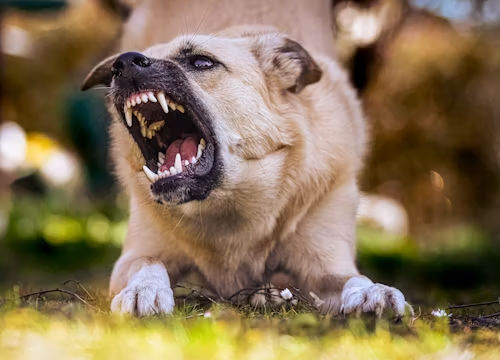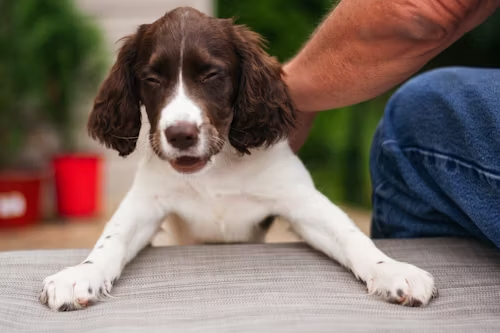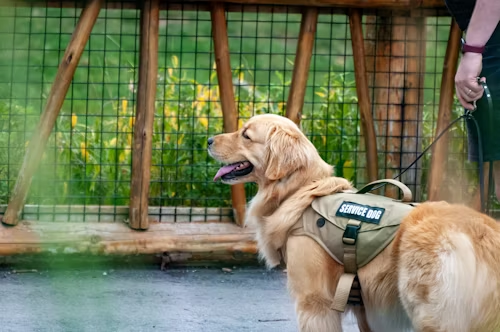Training your dog isn’t just about obedience; it’s about communication, safety, and building trust.
Even if you’ve just brought home a playful puppy or adopted an adult dog, teaching the seven basic dog commands lays the foundation for a strong bond and a peaceful home.
These commands help your dog understand what’s expected, prevent unwanted behavior, and keep them safe in everyday situations. Even better, training can be fun for both of you, it’s a time to connect, reward good behavior, and watch your furry friend grow in confidence.
In this article, we’ll explain the 7 essential commands every dog should know, how to teach them step-by-step, and expert tips to make training simple and effective, even if you’re a first-time dog owner.
Why Dog Training Matters
Before moving into the commands, it’s worth understanding why training is so important.
- Safety: A well-trained dog will stop, stay, or come when called, even in distracting or dangerous situations.
- Better communication: Training helps your dog understand your words and body language.
- Good manners: Commands prevent jumping, chewing, or barking excessively.
- Confidence and trust: Dogs thrive when they know what’s expected and are praised for doing it right.
Training doesn’t have to be complicated or time-consuming. Just 10–15 minutes a day of consistent, positive training can make a world of difference.
The 7 Basic Dog Commands Every Owner Should Know
Dog trainers and behaviorists agree that these seven commands form the backbone of good obedience training:
- Sit
- Stay
- Come
- Down
- Heel
- No (or “Leave it”)
- Off
Let’s explain each one in detail; what it means, why it matters, and how to teach it effectively.
1. Sit
“Sit” teaches your dog to stop what they’re doing and sit calmly on command. It’s often the first command dogs learn because it’s simple and useful in many situations; greeting guests, waiting for food, or crossing the street.
How to Teach “Sit”
- Hold a treat close to your dog’s nose.
- Slowly move the treat upward; their head will follow, and their bottom will naturally lower.
- As soon as they sit, say “Sit” clearly and give them the treat.
- Praise them warmly — “Good sit!”
2. Stay
The “Stay” command tells your dog to remain in one place until you release them. It’s vital for safety, especially near roads or when guests enter the house.
How to Teach “Stay”
- Start with your dog in a sitting position.
- Open your palm and say “Stay.”
- Take one small step back.
- If your dog stays put, reward them and praise.
- Gradually increase the distance and time before rewarding.
Always end the command with a release word like “Okay” or “Free” so your dog knows when it’s time to move again.
3. Come
“Come” (or “Here”) is one of the most important commands, it can literally save your dog’s life if they run toward danger or escape your yard.
How to Teach “Come”
- Use a leash and kneel down to your dog’s level.
- Say your dog’s name followed by “Come!” in an excited, friendly tone.
- Gently tug the leash toward you and reward them when they arrive.
- Gradually practice without the leash in a fenced area.
4. Down
“Down” teaches your dog to lie flat on the ground; a calm, submissive position. It’s helpful when you want them to settle, stop jumping, or rest quietly.
How to Teach “Down”
- Start with your dog in a sitting position.
- Hold a treat near their nose and slowly lower it to the floor.
- Move your hand out along the ground — your dog should follow into a lying position.
- Once they lie down, say “Down,” praise, and reward.
If your dog resists, avoid pushing them down. Patience and repetition work far better than force.
5. Heel
“Heel” means your dog walks beside you; not ahead, not behind, with a loose leash. It makes walks safer and more enjoyable for both of you.
How to Teach “Heel”
- Start walking slowly with your dog on a short leash by your left side.
- Say “Heel” and reward them when they walk beside you.
- If they pull ahead, stop walking and wait until they return to your side.
- Praise and resume walking.
6. No / Leave It
Dogs are naturally curious; they’ll sniff, chew, or grab things that aren’t safe. “No” or “Leave it” teaches them to stop that behavior immediately.
How to Teach “Leave It”
- Hold a treat in both hands.
- Show your dog one closed fist with a treat inside and say “Leave it.”
- When they ignore that hand, open your other hand and give them a treat from there.
- Repeat until they understand that ignoring temptation leads to rewards.
This command can prevent your dog from eating something harmful or chasing wildlife.
7. Off
“Off” teaches your dog not to jump on people, furniture, or counters. It’s different from “Down,” which means to lie flat.
How to Teach “Off”
- When your dog jumps up, say “Off” in a calm but firm tone.
- Turn away and avoid eye contact until all four paws are on the ground.
- The moment they stop jumping, praise and reward.
Bonus Command: Watch Me
Though not one of the “classic seven,” “Watch Me” (or “Look”) helps build focus. When your dog can give you attention on cue, every other command becomes easier to teach. To train it:
- Hold a treat near your face and say, “Watch me.”
- When your dog makes eye contact, reward immediately.
Training Tips for Success
- Keep Sessions Short and Positive: Dogs learn best through repetition and positive reinforcement. Aim for 10–15 minutes a day.
- Use High-Value Rewards: Tiny, tasty treats (like chicken bits or soft training treats) keep your dog motivated.
- Be Consistent: Use the same words, gestures, and tone each time. Mixed signals confuse dogs.
- Avoid Punishment: Yelling or physical correction damages trust. Instead, redirect and reward good behavior.
- Practice in Different Environments: Once your dog masters commands indoors, practice outdoors or around distractions.
- End on a Positive Note: Always finish training sessions with praise or playtime; leave your dog feeling successful.
Common Mistakes to Avoid
- Overtraining: Too long = frustration.
- Mixed signals: Everyone in the household should use the same commands.
- Inconsistent rewards: Dogs repeat what’s reinforced; be timely and generous.
- Using a harsh tone: Dogs respond to clear, calm leadership; not anger.
Understanding Your Dog’s Learning Style
Every dog learns differently. Some respond quickly to treats; others prefer toys or verbal praise.
- Puppies need frequent, short lessons and patience.
- Rescue dogs might take time to trust and focus.
- Energetic breeds need extra exercise before training to release excess energy.
The Importance of Patience and Consistency
Training takes time, and that’s okay. Even small progress is success. If your dog struggles with a command, take a step back and make the task easier. The key is consistency, not perfection.
Remember, dogs don’t misbehave out of stubbornness; they simply need clear guidance and gentle repetition.
Tools That Can Help with Dog Training
- Clicker: Reinforces precise timing when marking good behavior.
- Treat pouch: Keeps rewards handy.
- Leash and harness: Control and comfort during walks.
- Training mat or crate: Helps with “Stay” and “Down” practice.
Building a Stronger Bond Through Training
Every training moment is a bonding opportunity. When you use positive reinforcement, your dog associates learning with love and trust. They start looking to you for guidance, and that’s when true partnership begins.
Training isn’t just about obedience; it’s about mutual respect. When your dog understands your words, your world opens up together; safe walks, calm greetings, and shared adventures.

